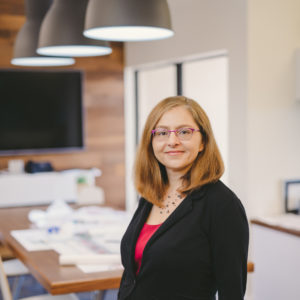The Crystal Conservatories: St. Barnabas’s crowning touch
For more than 40 years William V. Day has been counted among the most visionary and creative executives in long-term care. As chronicled in this magazine (“We Have to Look At What Long-Term Care Really Means,” January 1998, p. 32) and elsewhere, Day took a rundown 63-bed nursing home in western Pennsylvania and, over the years, more than doubled its capacity, and then conceived and developed a 167-bed subacute facility, a home healthcare service, several senior living communities ranging from a 182-unit assisted living facility to more than 100 single-story carriage homes, an outpatient center seeing more than 37,000 patients annually, and even a 350-seat theater. St. Barnabas then purchased property that encompassed a 100-year-old swimming pool, well known to the surrounding community. In a process beginning in 2007, Day commenced raising funds for an upgrade of the old pool that went far beyond an upgrade to creation of the Crystal Conservatories, a striking piece of architecture springing lightly from the western Pennsylvania countryside (figure 1). It was a highly engineered, glass-enclosed structure that would allow St. Barnabas residents and visitors from nearby Valencia and Gibsonia to relax, swim, and rehabilitate using aquatherapy and various other modalities. The structure is, in fact, a product of a company called Blue Diamond Conservatories, which is marketing it in customizable configurations nationwide. Recently, Long-Term Living Consulting Editor Richard L. Peck asked Day, as well as Jim Druschel, president of Blue Diamond; Emily Syruws, Crystal Conservatories coordinator; and Gwenn Whiteford, rehabilitation therapy director, to elaborate on the development of and plans for this unique $4.2 million facility.
The Crystal Conservatories of St. Barnabas
Peck: Where did the idea for this come from?
Day: We acquired the land in 2005 in conjunction with an expansion plan for our carriage homes and knew that the property included this 100-year-old pool that was still in relatively good shape, complete with handicapped ramps. We started talking with architects and designers about how we could upgrade the pool and put it to use, both for St. Barnabas and the neighboring community, and learned about Blue Diamond and its conservatories. We thought this type of structure would fit well with the feel we have for that area of the campus.
Peck: This pool structure is being intended for use by both residents and people in the neighboring communities?
Day: Yes, it is not only important on the clinical rehabilitation side, but community outreach is one of its main purposes. We’ve already received inquiries about wedding receptions, parties and so forth. Our own residents will have easy access to it with our own buses and parking facilities, as well as proximity to other popular structures on the property, such as the library and the lodge that we converted from other buildings there (figure 2).
Site plan
Peck: Is this structure a standardized construction, available elsewhere?
Druschel: Veka, one of the world’s largest extruders of PVC “profiles” for windows and doors, joined with the company Sash UK, a British firm that produces these throughout England and Europe. They’re all custom fit for the area they’re occupying-the one for St. Barnabas is the largest they’ve made yet. It was assembled and tested in England, disassembled and shipped via container to the St. Barnabas site, and built by British constructors called “fitters.”
Peck: Was this a big design and engineering challenge?
Day: What first caught my attention for this sort of structure was the massive Crystal Cathedral that Rev. Robert H. Schuller constructed in California some years ago. But there they were working with a 40-degree temperature swing, versus a seemingly 100-degree swing in “beautiful downtown” Valencia. For starters this made choice of an HVAC contractor critical-they had to be able to maintain a comfortable temperature in this all-glass structure year-round, but with good air circulation, radiant heat from the floor, no ducting, and no humidity (figure 3). That’s a major engineering challenge, and we were fortunate to sign up Scalise Industries, which had done Pittsburgh’s Phipps Conservatory with similar climate control challenges, except in that case high humidity was a good thing.
Maintaining a comfortable year-round temperature was an engineering challenge in the pool area
Another remarkable facet of the engineering here is that 40% of this building is underground, with a massive concrete foundation holding this large glass structure down and secure against wind shear, with absolute safety for the occupants.
Druschel: The glass itself is, of course, important-it’s a low-E, laminated, high-UV retention glass called Enviroglaze, with panels an inch-and-a-quarter thick structured so that the HVAC system keeps things comfortable inside.
Peck: What are plans for the use of this building?
Syruws: There will be a variety of activities, classes and therapies for residents and guests, including aerobics, waterwalking, hydrotherapy, and open swimming.
Whiteford: Aquatherapy is excellent for reducing weight-bearing stress on joints and allowing muscle strengthening without the use of weights. We are offering this and other forms of physical therapy by licensed therapists at least three times a week. About 10 people a day are attending class, and as many as 30 a day visit the pool. We expect these numbers to grow as people become more familiar with the facility.
Day: We should mention that we call this Crystal Conservatories-plural-because this is really a four-building complex. We have the pool structure; the Tower Conservatory (figure 4), which is actually four pods plus a half-story on top-this has already hosted more than a half-dozen catered, private functions, and we’ve had inquiries about Christmas parties and weddings; there is also a cabana offering dressing rooms, restrooms, vending, and a massage therapy area; and a mechanicals structure with a fully usable deck on top for parties and so forth. The Crystal Conservatories is quickly becoming an important part of St. Barnabas’s culture, and I’m glad that we have this beautiful amenity for all of St. Barnabas to enjoy.
The Tower Conservatory
For further information about St. Barnabas, please call (724) 443-0700 or visit https://www.stbarnabashealthsystem.com. For information about Blue Diamond Conservatories, visit https://www.bluediamondconservatories.com. To send your comments to the editor, e-mail mhrehocik@iadvanceseniorcare.com.
Sidebar
At a glance…
Architectural innovation creates a visual landmark on the St. Barnabas campus.
Long-Term Living 2009 June;58(6):18-22
I Advance Senior Care is the industry-leading source for practical, in-depth, business-building, and resident care information for owners, executives, administrators, and directors of nursing at assisted living communities, skilled nursing facilities, post-acute facilities, and continuing care retirement communities. The I Advance Senior Care editorial team and industry experts provide market analysis, strategic direction, policy commentary, clinical best-practices, business management, and technology breakthroughs.
I Advance Senior Care is part of the Institute for the Advancement of Senior Care and published by Plain-English Health Care.
Related Articles
Topics: Articles , Design , Facility management











